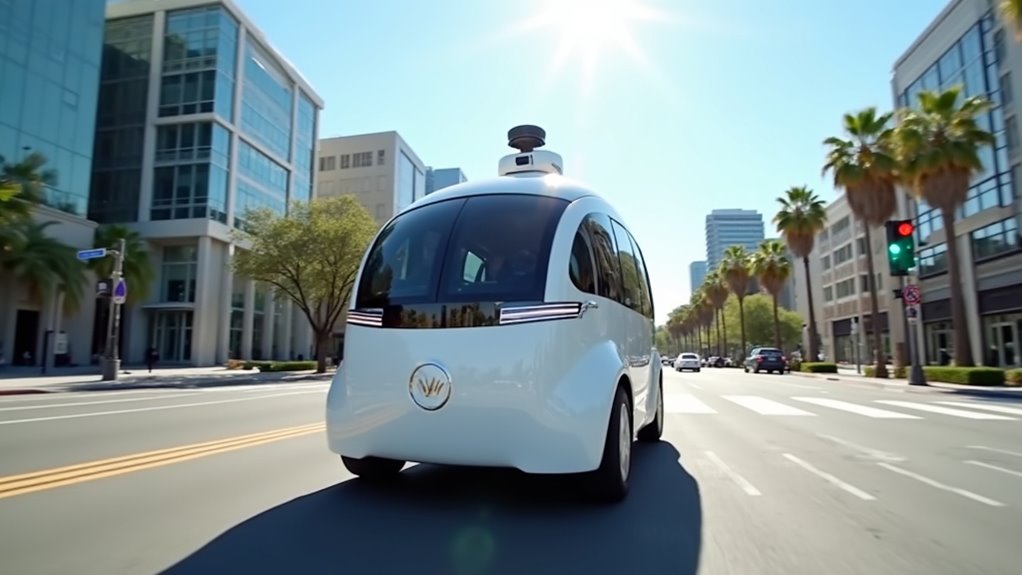Waymo just scored big: its robotaxis got the CPUC stamp of approval to roam 85 square miles of Silicon Valley, including San Jose—while rival Cruise sits in the regulatory timeout corner. With driverless rides already rolling through San Francisco, Mountain View, and more, Waymo’s fleets promise more rides (and data) than ever, all hands-free. Expect rides to look the same for now, but with Silicon Valley looking less Fast & Furious and more Westworld, things are about to get interesting…
Buckle up, Silicon Valley—robotaxis are rolling into town, and they don’t even need a driver’s license (or a playlist of questionable EDM remixes).
Robotaxis are taking over Silicon Valley streets—no driver’s license or questionable EDM playlists required.
Waymo, Google’s not-so-secret self-driving arm, just scored a massive win: the California Public Utilities Commission (CPUC) has given the green light for its robotaxis to cover more ground. Think San Jose, the South Bay, and basically everywhere your rideshare driver grumbles about going.
This isn’t Waymo‘s first rodeo. The company already zips around San Francisco, Mountain View, Palo Alto, Los Altos, and Sunnyvale with its commercial driverless rides. The new approval expands the playground to almost all of San Jose—no small feat in a region where “traffic” is a competitive sport.
But don’t expect a sudden swarm of robot cars at every stoplight. Near-term, operations will look pretty much the same. Change comes slower than your last dial-up connection. With this expansion, Waymo’s service area now covers about 85 square miles across San Francisco and Silicon Valley.
A few things make this news more than just another tech flex. First, regulatory confidence: the CPUC’s nod signals that Waymo’s Level 4 autonomy (that’s “hands-off, eyes-off, nap-if-you-dare” on the automation scale) is ready for prime time. Waymo currently delivers more than one million driverless rides each quarter, showing just how rapidly its fleet is scaling up.
Their updated Passenger Safety Plan? Endorsed by 23 stakeholders, objected to by zero. Not bad in a world where everyone’s got an opinion (and a Twitter account).
Meanwhile, competitors like Cruise have hit regulatory potholes, with safety suspensions leaving their robotaxis stuck in the garage. Waymo, in contrast, gets to keep cruising—literally—thanks to its clean compliance record and operational maturity.
On the business side, this is more than a victory lap. Expanded service means more paying customers and, potentially, serious revenue. The vehicles rely on sophisticated perception systems that can detect everything from stray dogs to cyclists, making them remarkably adaptable to unpredictable urban environments.
Investors are already eyeing opportunities in robotics, urban infrastructure, and the data goldmine that comes with autonomous mobility. And yes, more jobs—because someone’s got to keep these robots from getting lost at SFO (which, by the way, is on Waymo’s radar).
Bottom line: Silicon Valley’s streets just got a little less human, and a whole lot more interesting.





